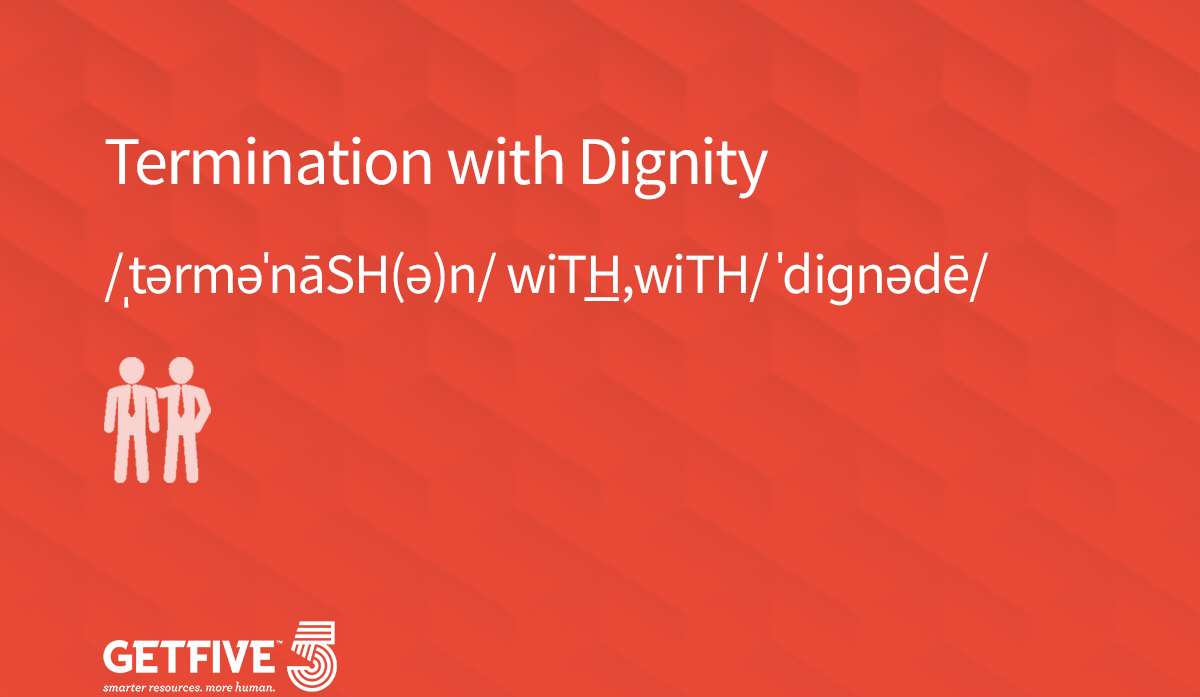There are few moments more heart-sickening than the one in which your boss knocks, enters your office, closes the door, and asks, “Can I talk to you?” Or that moment right after you’ve been summoned to the HR office, when you walk in to find your boss across from the head of HR, motioning you toward an empty chair.
Becoming unemployed is one of the greatest traumas of life, and so many companies needlessly compound their employees’ shock and emotional distress by handling their termination poorly.
In 1998, GetFive introduced the concept of “termination with dignity” after a three-month project examining every part of the termination process with the help of HR leaders and ethicists. Dignity means that humans should be treated as persons, rather than objects that are used and then thrown away.
At a GetFive HR Network Breakfast, panelists agreed on the value of providing as much advance information as possible during a layoff.
Additionally, there were three main areas for companies to consider when striving for termination with dignity:
Communication
It’s important to communicate clearly and often. “However much communication you think you should do, you should always do more,” said one HR executive. Another possibility is that some employees you plan on retaining might “jump ship,” but he observed that frequent conversations with your top performers will ensure they know there’s a place for them down the road.
A Team Approach
Any time there is a layoff, a team should come together to make the necessary decisions. This could include the manager, the HR representative, someone from legal counsel, and even someone from communications who is managing the internal messages. This team should also meet for a follow-up to talk about what worked and what didn’t.
Timing
While some companies still dismiss employees on a Friday afternoon, this practice is now hotly contested. “You don’t want people to fester about this over the weekend,” explained one HR executive. “One of the best ways you can avoid litigation is to make sure people leave that conversation with their head in a good place, and it’s just much easier to do that during the week. It also gives them a couple days to get things organized and packed up.”









